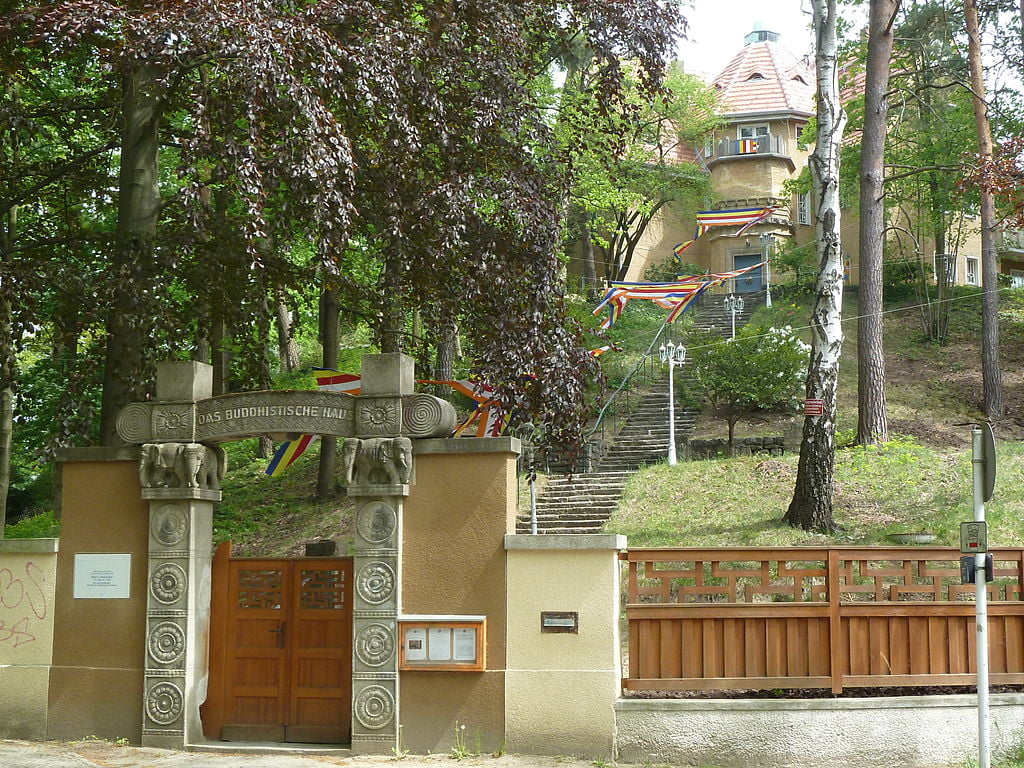Das Buddhistische Haus is a Theravada Buddhist temple complex in Frohnau, Berlin, Germany. It is considered to be the oldest and largest Theravada Buddhist center in Europe and has been declared a National Heritage site.
Shrine’s History
The main building was designed by the architect Max Meyer for Paul Dahlke, a German physician who had undertaken a number of trips to Ceylon prior to World War I and became a Buddhist. It incorporates elements of Sri Lankan Buddhist architecture and culture and was completed in 1924 Under Dahlke’s direction it became a center of Buddhism in Germany. After his death in 1928, the house was inherited by his relatives and Buddhists met in a house nearby. By 1941 Buddhist meetings and publications were prohibited by the Nazi government. After the war refugees lived in the quarters. The place deteriorated and was even considered for demolition when Asoka Weeraratna from Sri Lanka became aware of its existence. In December 1957 he bought the building from Dahlkes nephew on behalf of the German Dharmaduta Society (GDS). It was renovated at that time as a Buddhist temple complex. Missionary Buddhist monks, primarily from Sri Lanka, came to stay at the Haus that became the center for spreading the teachings of the Buddha in Western Europe. The temple is open to the public and was visited by about 5,000 people in 2006
Architectural Relevance of This Shrine
Entering the Elephant Door the visitor faces 73 steps up to reach the main building. The building houses among others the library and the meditation room. In a separate building, guests can be accommodated. In 1959, the city of Nagoya donated a sculpture of Guanyin that is placed in the garden.
